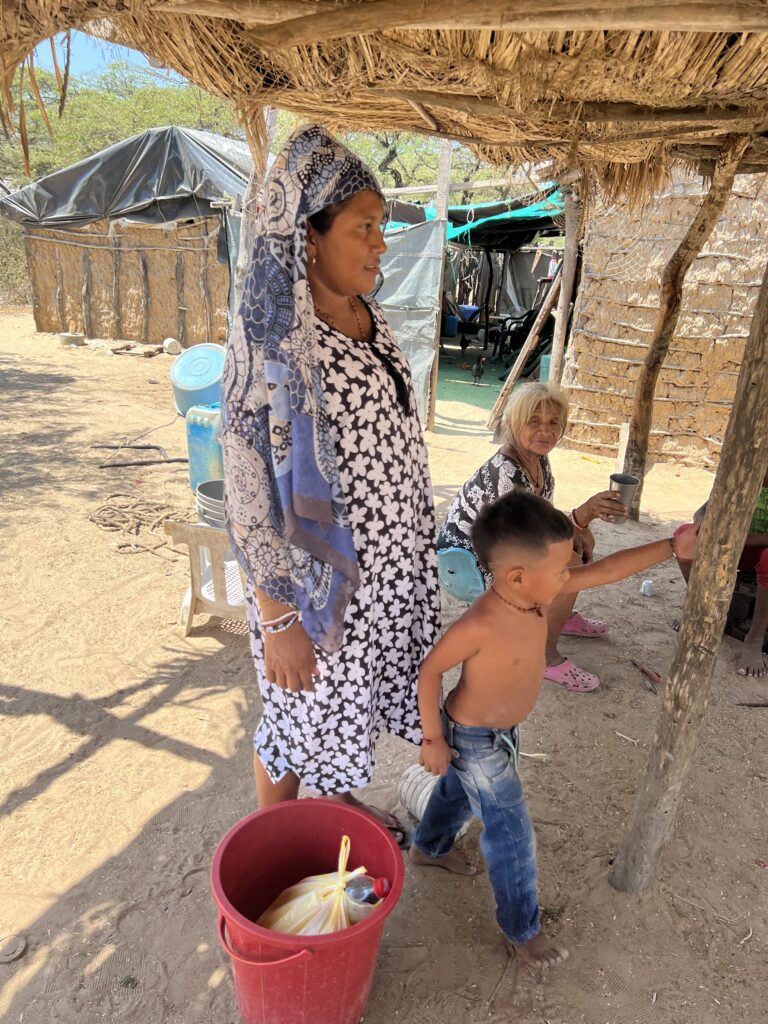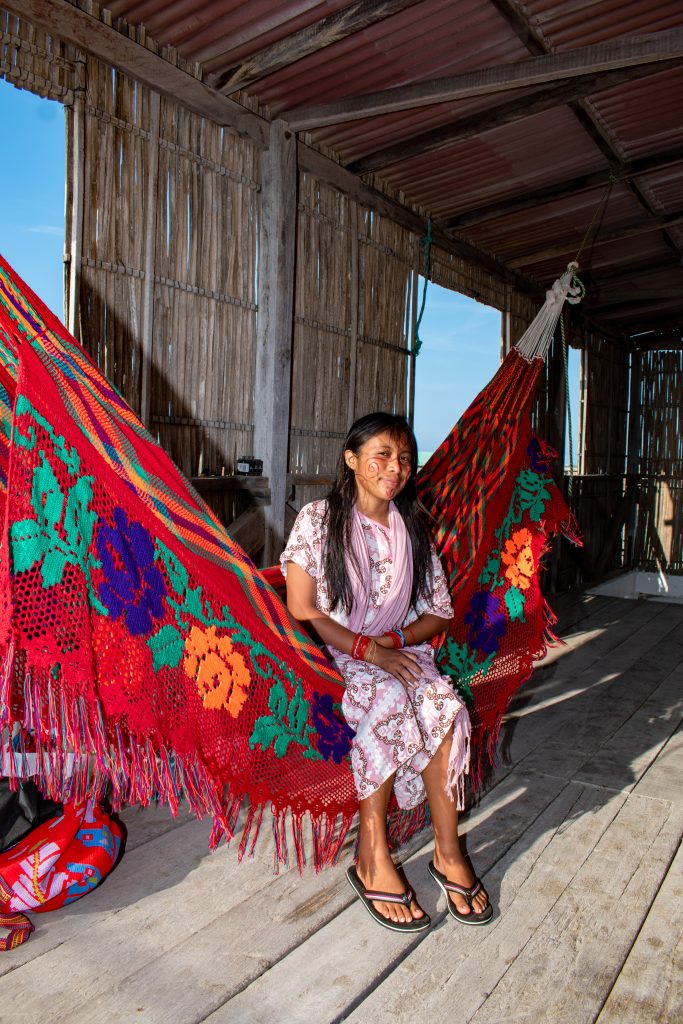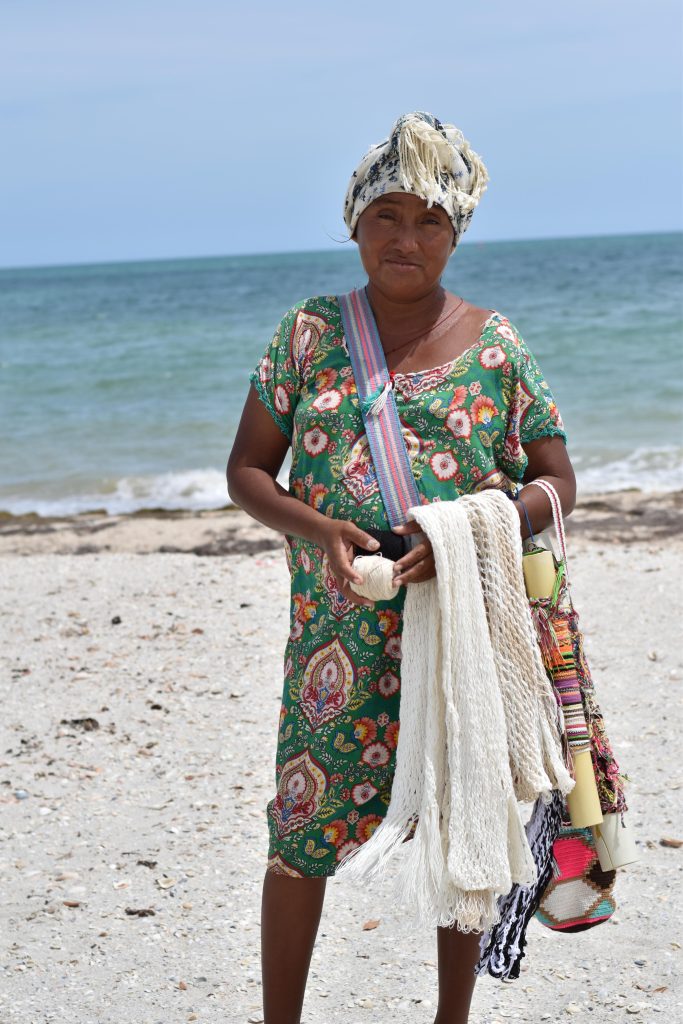
In the arid landscapes of La Guajira, Colombia, the Wayuu women stand as pillars of resilience, preserving centuries-old traditions while navigating the challenges of modernity. They are the heartbeat of their community, fostering cultural continuity and advocating for Indigenous rights on a global stage.
The Wayuu people, dating back to 150 BC, have a rich history marked by their resistance to Spanish conquests. Today, they are recognized as the largest Indigenous tribe in Colombia.
One of the defining characteristics of Wayuu society is its matrilineal structure, where lineage and inheritance are traced through the female line. This system is central to their social structure and influences many aspects of their daily lives.
The Wayuu community is divided into territories and clans, each with families living in rancherías. The matrilineal system ensures that women play a crucial role in maintaining the social fabric of the community, inheriting property and passing down cultural knowledge.
Wayuu women are not only keepers of cultural traditions but also play a central role in the economic life of their communities.
One of the most significant economic activities is the creation of handicrafts, especially weaving. Wayuu women are renowned for their intricate weaving skills, producing items like hammocks, bedspreads, and the famous Wayuu Mochilas. Weaving provides substantial income and helps preserve cultural heritage.
Wayuu women also engage in trade, manage small businesses, and contribute to agricultural practices. They manage and operate small businesses, ranging from food stalls to artisanal shops, fostering economic independence and empowerment.

Wayuu women play a pivotal role in preserving and transmitting their community’s rich cultural heritage.
The transition from childhood to womanhood is marked by significant rituals, notably the seclusion period following a girl’s first menstrual cycle.
During the seclusion period, the girl is taught various skills and knowledge by her female relatives, covering domestic duties, weaving, cultural traditions, and the responsibilities of womanhood.
Marriage in Wayuu culture is a strategic alliance between clans, involving a dowry system.
The dowry, typically including livestock and valuable items, demonstrates the suitor’s capability to provide for his wife, compensates the bride’s family, and strengthens bonds between clans.
Wayuu women are not only cultural guardians but also influential figures in leadership and political activism.
Wayuu women hold substantial political power and influence, participating actively in communal councils and assemblies. They engage in political activism, advocating for Indigenous rights and environmental protection.
Wayuu women are prominent figures in the fight for environmental and social justice. They lead campaigns against coal mining and other extractive industries. They also address social justice concerns, such as access to education, healthcare, and economic opportunities.
Wayuu women are esteemed for their expertise in natural medicine and spiritual practices.
Wayuu women use natural remedies to treat illnesses and maintain health, addressing both physical and spiritual aspects. They also play a central role in spiritual ceremonies and rituals, ensuring the continuity of traditions.
Their involvement in spiritual and medicinal practices is integral to the preservation of their cultural heritage. Their role in rituals surrounding death highlights their spiritual beliefs and underscores their role in maintaining the cultural fabric of Wayuu society.

Wayuu women face modern challenges such as the impacts of coal mining, armed conflict, and environmental degradation. They have shown remarkable adaptability and strength in addressing these issues.
Their activism extends to broader cultural and social rights, advocating for education, healthcare, and economic opportunities.
Wayuu women actively participate in the Indigenous women’s movement, advancing autonomy and rights. This movement empowers Wayuu women and fosters solidarity with other Indigenous women’s groups.
Wayuu women have integrated their claims into international movements, gaining recognition and support. They participate in international decision-making processes, raising awareness and advocating for policies that respect Indigenous rights and promote gender equality.
Wayuu women are the primary custodians of their cultural heritage, actively shaping the cultural landscape to ensure its relevance and vitality.
Wayuu women shape the values, beliefs, and aspirations of their children and youth, instilling a sense of pride and belonging. They advocate for the inclusion of Indigenous knowledge and languages in formal education and serve as role models for younger generations.
In conclusion, Wayuu women are essential to the resilience and continuity of their culture. Their multifaceted roles ensure the preservation of their heritage, the economic well-being of their communities, and their continued fight for social and environmental justice. Their legacy will undoubtedly endure for generations to come.
Discover our online store featuring a stunning collection of Wayuu bags. Shop now and embrace the beauty of tradition!